Scientists in Japan have successfully 3-D printed a cut of Wagyu beef that “looks just like the real thing”, according to a recent report in the Smithsonian magazine, the official journal of the Smithsonian Institution for science, history and innovation in the United States.
At first glance it reads as though lab-grown scientists have indeed achieved the holy grail of producing a prime Wagyu steak in a lab:
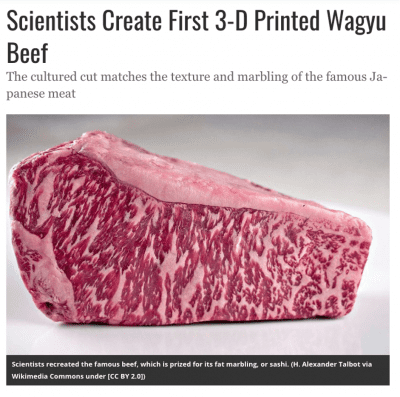
Other articles reporting the same development have also marvelled at how close the lab grown product has come to Wagyu beef:
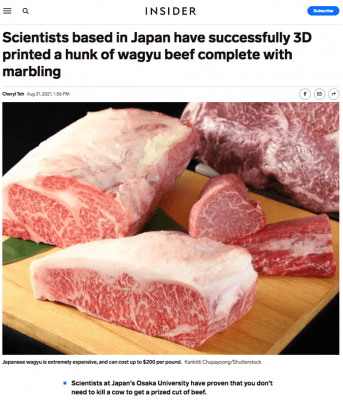
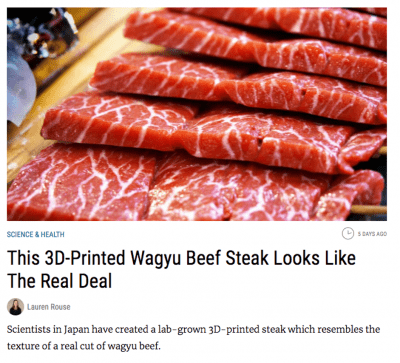
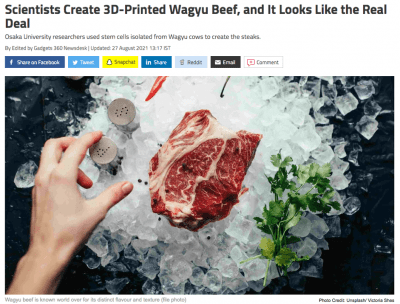
It’s interesting to note that each of the above articles uses pictures of real Wagyu beef to support their stories.
When you look at the original research paper underpinning the news and see the pictures of what was actually produced, it does raise the head scratching question of how a variety of news articles arrived at the same conclusion that lab grown product looks like the “real thing”:
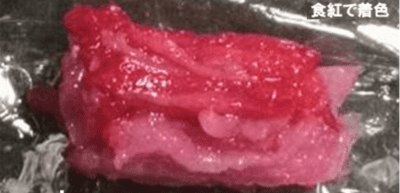
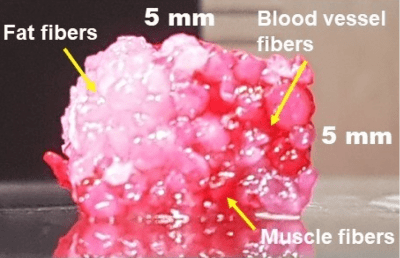
Pictures of the 3D printed “wagyu” beef produced in a lab at Osaka Unversity.
“Looks like the real thing” is a phrase obviously open to interpretation.
The development is nonetheless newsworthy as the latest chapter in ongoing attempts by scientists to achieve commercially scalable lab-grown “meat”.
The senior author of the study, Michiya Matsusaki from Osaka University, explained that individual fibers including muscle, fat, or blood vessels were fabricated from the living cells using bioprinting and then arranged in 3D, to reproduce the structure of the real Wagyu meat.
“By improving this technology, it will be possible to not only reproduce complex meat structures, such as the beautiful sashi of Wagyu beef, but to also make subtle adjustments to the fat and muscle components,” he said.
More details on the research can be found at Osaka University website here.
Judging by the pictures the science has some way to go before grasping the holy grail of Wagyu beef “that looks like the real thing”, even if some media outlets have already declared the milestone acheived.
While getting the science right remains a work in progress, another major challenge for the emerging sector is to win consumer acceptance for lab-grown meat, with studies showing negative perceptions still abound among consumers.
As part of that goal the sector is seeking to position lab-grown meat as a more “sustainable” replacement for beef, as evidenced in the media coverage listed above where each article made a point of referencing claims that livestock account for almost 15 percent of greenhouse gas emission in the US.
This is despite that figure having been called out as a significant over-estimate by independent scientific bodies such as the University of California Davis, which says 3.9pc is a more accurate figure, while pointing out ithat livestock should not be measured purely by what they emit alone. That ignores the other side of the equation – the atmospheric carbon captured by the biogenic cycle of which they are part, and the differences in how methane from cattle behave in the atmosphere compared to emissions from fossil fuels.

Lab slime IS Lab Slime regardless of how it looks. ALL lab slime has the potential for serious contamination, illness and death issues.
That is the most disgusting thing I have ever seen. It looks like melting jello. I will stick with American beef – the best there is.